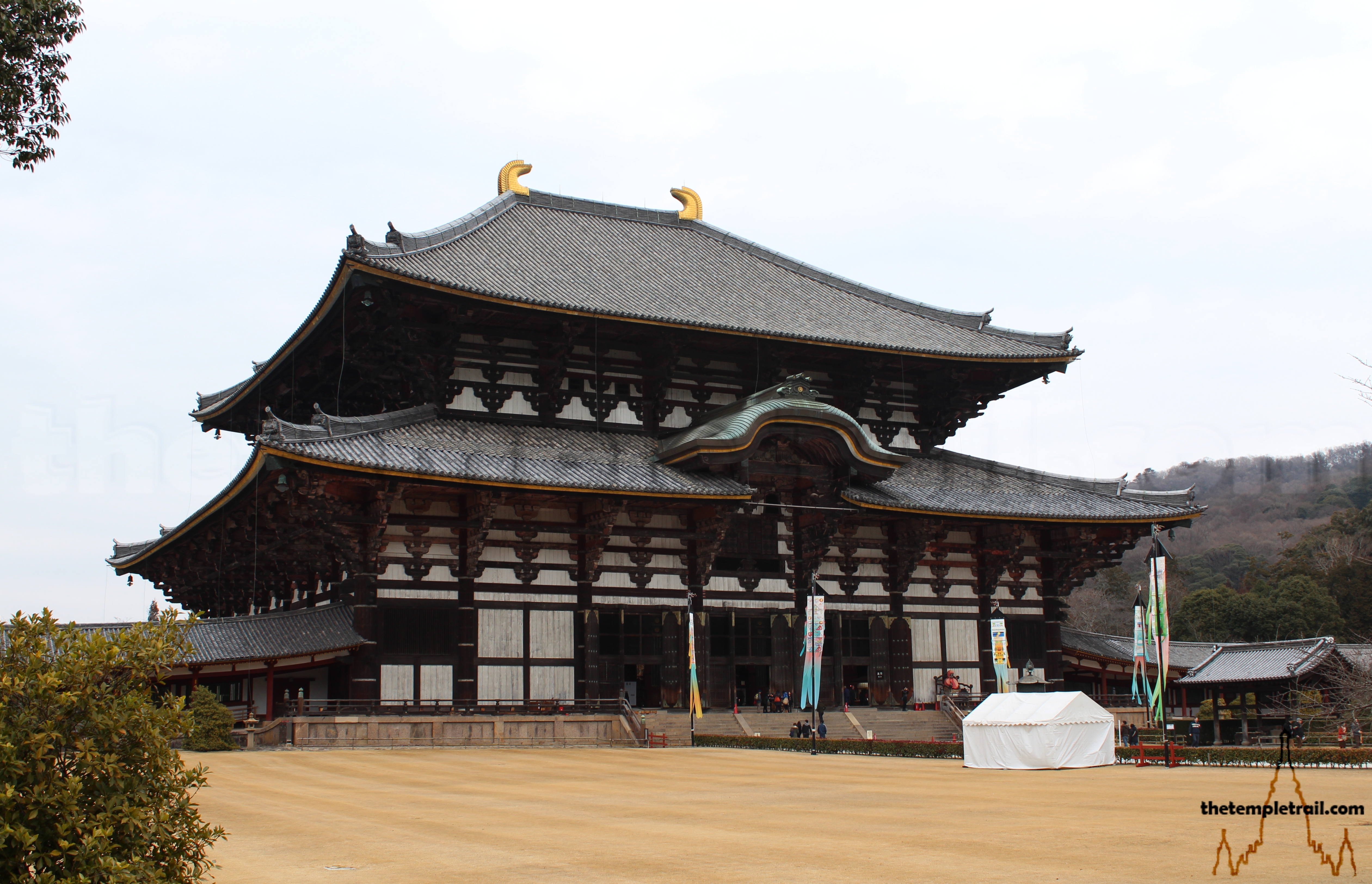Your rusty rental bicycle creaks and complains under the cranking of your feet on the pedals. Powerful sunshine beats down on your neck in the humid Laotian afternoon. As your bike strains to move along the pitted road, you sweat out the laab and sticky rice that you ate for lunch at the roadside café. To your right, the mighty Mekong River swells as the smaller Nam Khan river feeds into it. The murky water is the abode of the nāgas (mythical serpents) whose depictions pepper the landscape here in Luang Prabang. At the confluence of the two rivers, the nāgas seem to be writhing and their raw power is felt by the Lao, who hold a special place in their hearts for the fabled creatures. Where the rivers meet is said to be the home of two nāgas who have been worshipped at the tip of the peninsula for hundreds of years. Cycling around the area, you feel the hum of energy that seems to be cast over the ancient town. Near the tip of the natural jetty is your final stop; a low-slung multi-tiered roof hails your arrival at the temple of the golden city, Vat Xieng Thong.
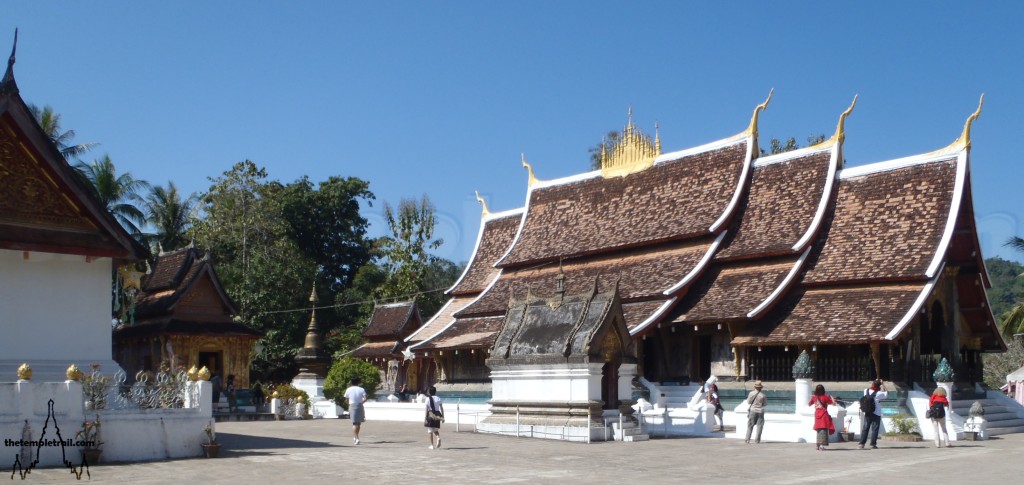
Built in the mid-16th century by King Setthathirat I in honour the 8th century King Chanthaphanit, Vat Xieng Thong Ratsavoravihan was a royal temple until 1975 and was the location of the coronation of the kings of Luang Prabang. The name has a double meaning and actually can mean the ‘golden tree temple’. The vat was added to over the years, with the last restoration being conducted in the 1950s and 1960s. The most recent work was conducted by King Sisavangvong, who convinced the French to contribute financially and whose ashes and bones are interred in the funerary carriage house. The temple was originally the gateway of the city and was the arrival and departure point for dignitaries, both native and foreign. The King would have arrived in Luang Prabang at the foot of the stairs that go from the confluence of the two rivers to the main gate that leads to the temple. He would first pay respects at the royal sanctuary before proceeding to the palace and city itself. The temple is one of the only surviving structures of the Lan Xang period and its glorious Luang Prabang-style structures were unharmed during the occupation and sacking of Luang Prabang in the Haw War at the end of the 19th century. The temple actually served as a base for the Black Flag and White Tai soldiers and was spared due to Đèo Văn Trị (known as Cam Oum in Lao), the White Tai commander, having noviced at the temple as a young monk.

After locking your bike with a flimsy built-in lock and climbing the short staircase from the river side, like the kings of old, your attention is drawn to the beautiful sim (ordination hall) and its elaborately flared and tiered roof. It is easily identifiable by the 17 spired dok so fa (sky bunch flower) that juts out from the centre of the roof. The uniquely Laotian umbrella-tipped roof ornament, which literally translates as ‘pointing at the sky,’ represents the centre of the universe. The building, constructed by King Setthathirat, became the beautiful black-lacquered and gilded masterpiece you see before you in the 1960s. The low-slung and heavily stylized roof is an attention grabber and you make your way from the gateway to the front of the sim in awe of its wonderful lines. The gilded walls on one side tell the story of Thao Souttasom, whereas, the wall on the other side tells the Khmer origin romantic story of King Thao Sisouthone and his love of the beautiful kinnari (half-bird woman) Nang Manola. By the door are two white columns that support two bronze lotus flowers.

You step up to the porch and walk under the dok huang pheung (bee hive pattern). This is an ornate screen panel between the two entrance columns that tapers in the middle like an icicle and is representative of a nāga’s body. From the sheltered porch, you view the beautiful wooden doors and their carved representations of scenes from Buddha’s life that are bolted shut. Realizing that you cannot go any further, you dart back out into the light and in the side door that brings you squarely inside the darkened interior of the sim.
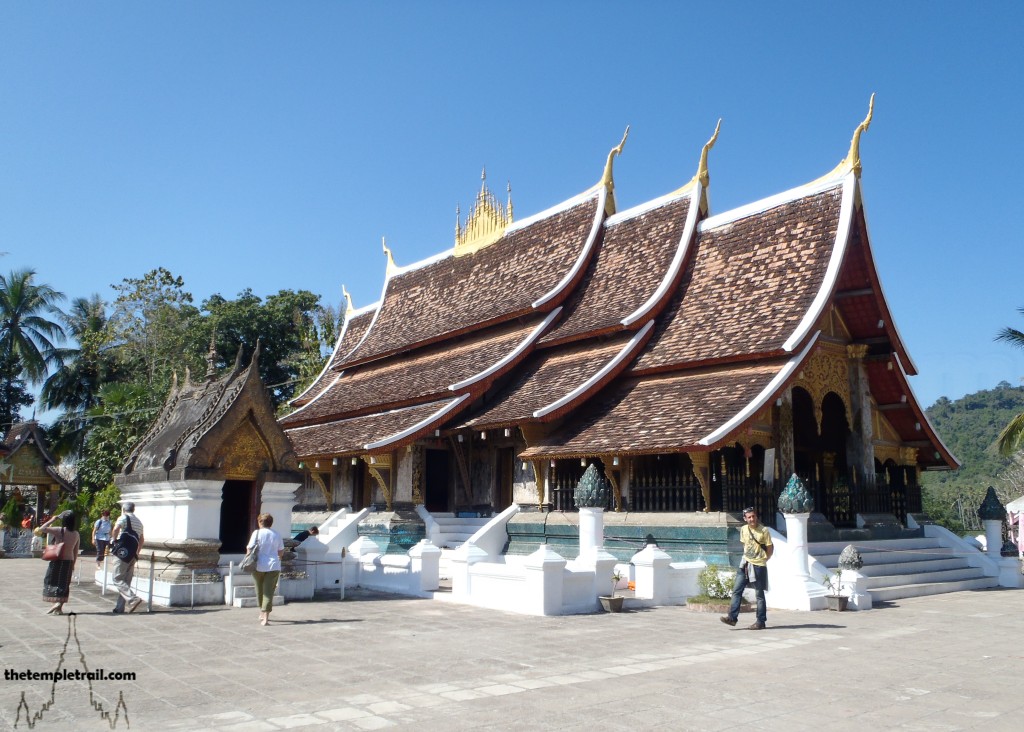
As your eyes adjust to the dim lighting, you see that the internal walls are also gilt on black. The wall paintings inside are of the legendary King Chanthaphanit and the fabled founding of Luang Prabang. The story goes that two pious hermits made their home at the base of a mai thong (a magical tree) and placed a boundary stone there indicating that it was a kingdom. Later, a meritorious betel trader from Vientiane by the name of Chanthaphanit was selected by the local people to be the first ruler of the kingdom of Muang Sua. Phagna Chanthaphanit Sathit Souvannaphouma ordered the construction of the royal palace at the site of the magical tree. You now stand on the very spot where this happened and, legend has it, that the very first temple on this site was built by him; hence the name ‘golden tree temple’. The walls also show scenes from daily Lao village life. People are shown winnowing rice and worshipping at a shrine. A beautiful image shows Nang Thorani (Vasudhārā), a bodhisattva, washing her hair and washing away the evil demon Mara while he send his warriors’ arrows toward the meditating Buddha.
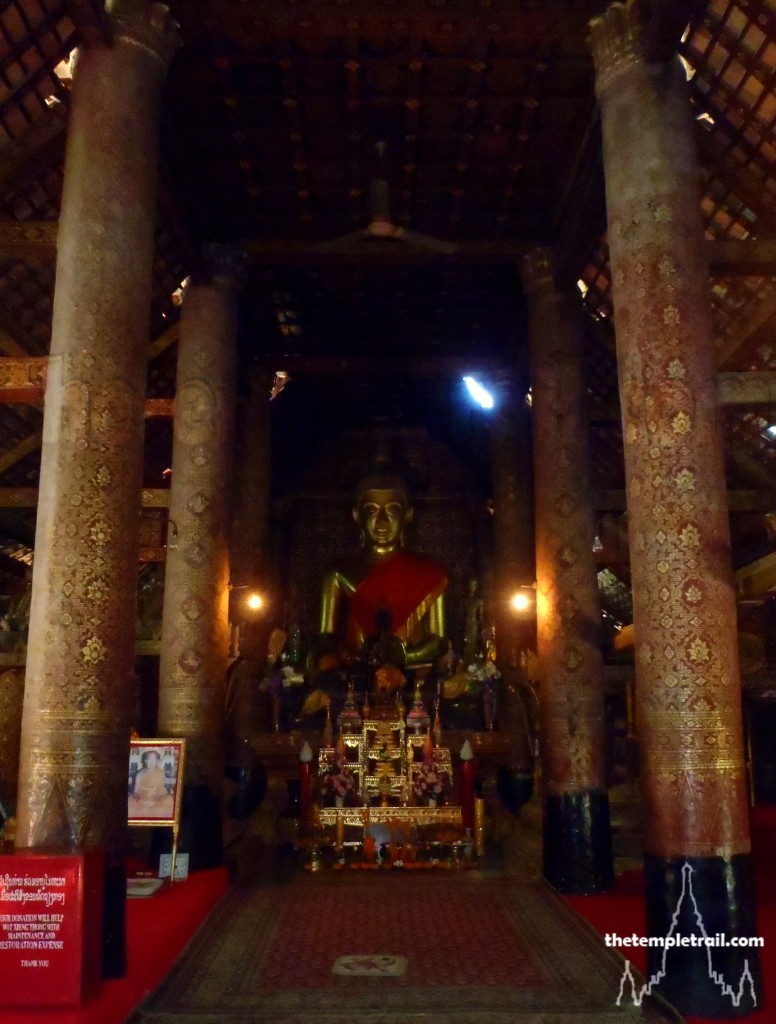
Ahead of you a serene Laotian Buddha statue gazes down at you and you take a few moments to shelter from the sun and enjoy the peaceful nature of the sim’s interior. Looking at the intricately decorated wooden columns and ceiling, you see that King Sisavangvong added the gilt stenciled dhammacakka (wheel of law) motif to the temple’s resplendent décor in the 1960s renovation.

Coming back out into the glare of the tropical sun, you make your way around to the back of the sim. The rear wall is lacquered in red and features a splendid glass mosaic of the mai thong tree. The piece is often called the tree of life and was added in the 1960s refurbishment. The mosaic also depicts a stupa and Buddha descending from the sky with the devas (gods). Directly behind you, stands the ho tai (tripitaka library), inside of which the holy scriptures of the temple are kept. Added to the sanctuary in the late 19th century, it is covered in glass mosaics on a red lacquer and the tree of life is a wonderful reflection of the colours on the back of the sim.
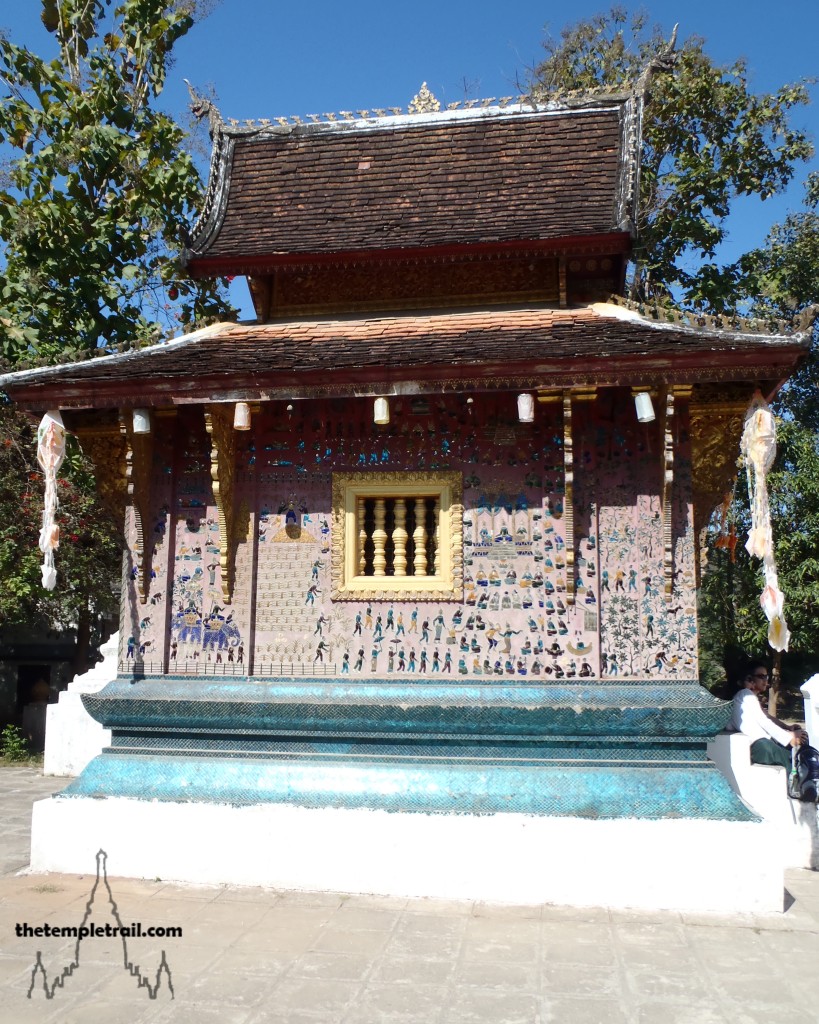
Beyond the ho tai are a set of small that (stupas) including the larger That Kraduk. There is also a small seated Buddha pavilion and a boat shelter. Next to the ho tai and sim is the wonderful ho tai pha sai nyaat (red chapel). The red chapel is a landmark of Vat Xieng Thong and functions as a small viharn (shrine hall). The red lacquered outside walls are decorated with golden reliefs and glass mosaics depicting the Lao folk story of Seio Savath and pastoral Lao scenes. The mosaics, which also depict boats on the river and shrines, date from the mid-20th century restoration by King Sisavangvong. The small red chapel houses a rare reclining Buddha statue that is said to be cast by King Setthathirat when he founded the temple in the mid-16th century. The Image was taken from the temple by the French for the Paris Exhibition of 1931 and was subsequently kept in Vientiane until the mid-1960s before being returned to Luang Prabang.
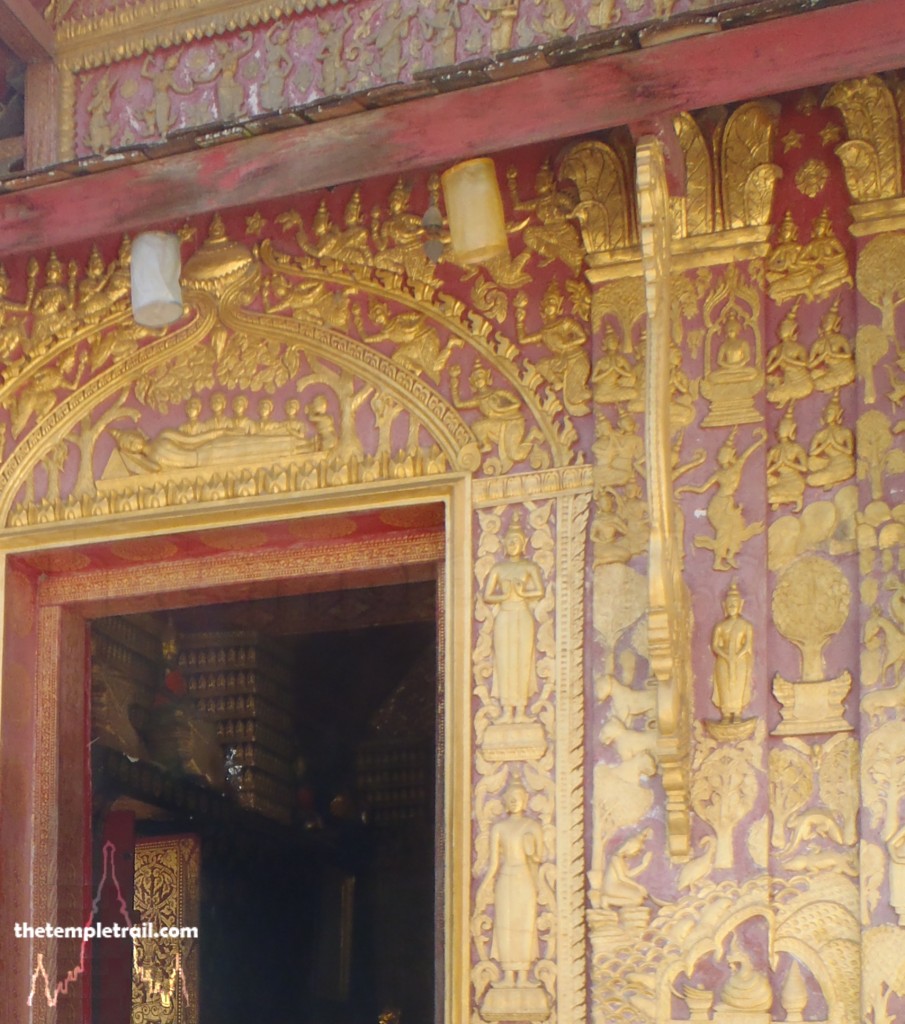
Passing the small ogee roofed standing Buddha pavilion and past a kuti (monk’s residence), you see some more that to the north near the ho kong (drum tower) that was added in the 1960s. Veering to your right, you come to the hong kep mieng (funerary carriage house). The outside of the building, which was added in the 1960s also, is golden and decorative, yet somehow very simple. The façade depicts scenes from the Ramayana. It houses the 12 metre tall royal funeral carriage along with the urns containing the ashes of members of the royal family, including those of King Sisavangvong. The hall isn’t just the final resting place of the royal family; a plethora of standing Buddha images, many in the Laotian ‘calling for rain’ pose, have been retired to this place. The multitude of statues line the red decorated chamber that echoes the glass mosaics of the ho tai and sim. They pay homage to the royal remains that are lain to rest here.
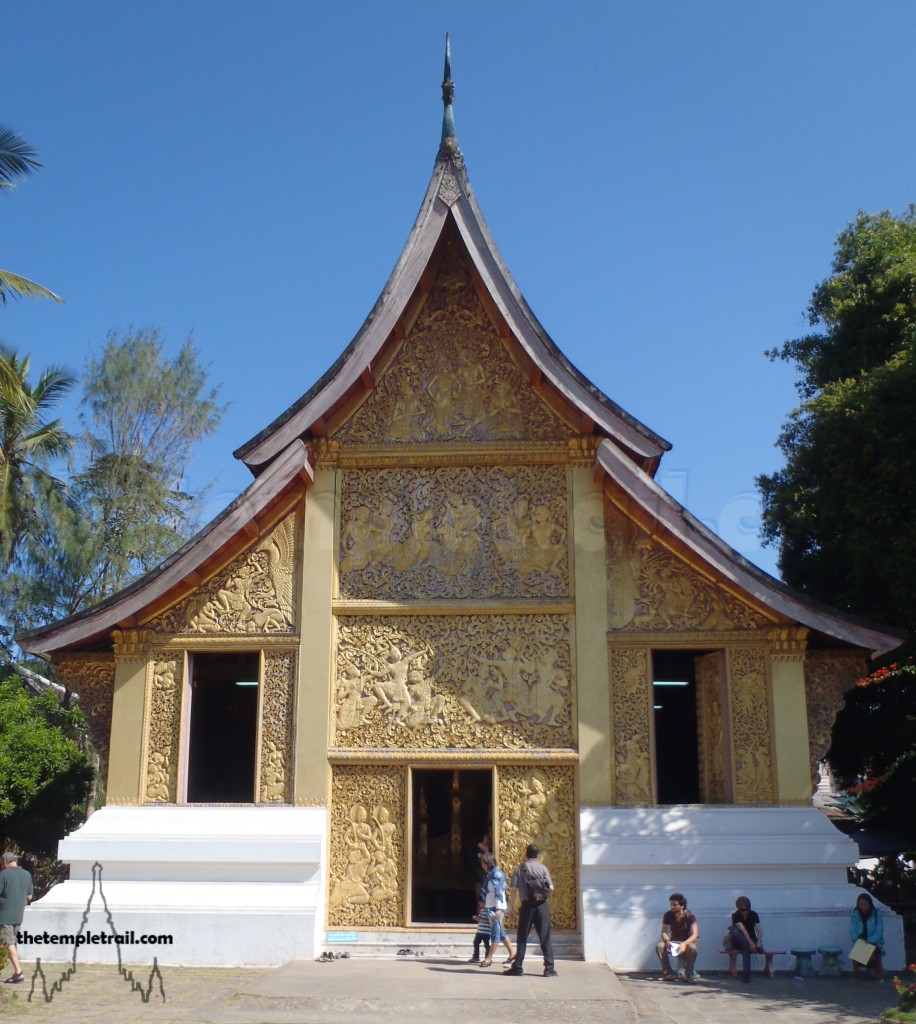
Exiting the building and ultimately the compound via the city entrance, you have time to contemplate the weight of history that rests on the shoulders of Vat Xieng Thong. The temple will always hold a special place in the hearts of the Luang Prabang natives, as it is intrinsically linked to the fate of their city. It has been there throughout. It is a constant reminder of who they are and what they stand for. Kings have made it their base and bandits have spared it when the rest of the city was burned to the ground. It was the point of entry and exit to the city for hundreds of years and to this day remains the beating heart and soul of Luang Prabang.
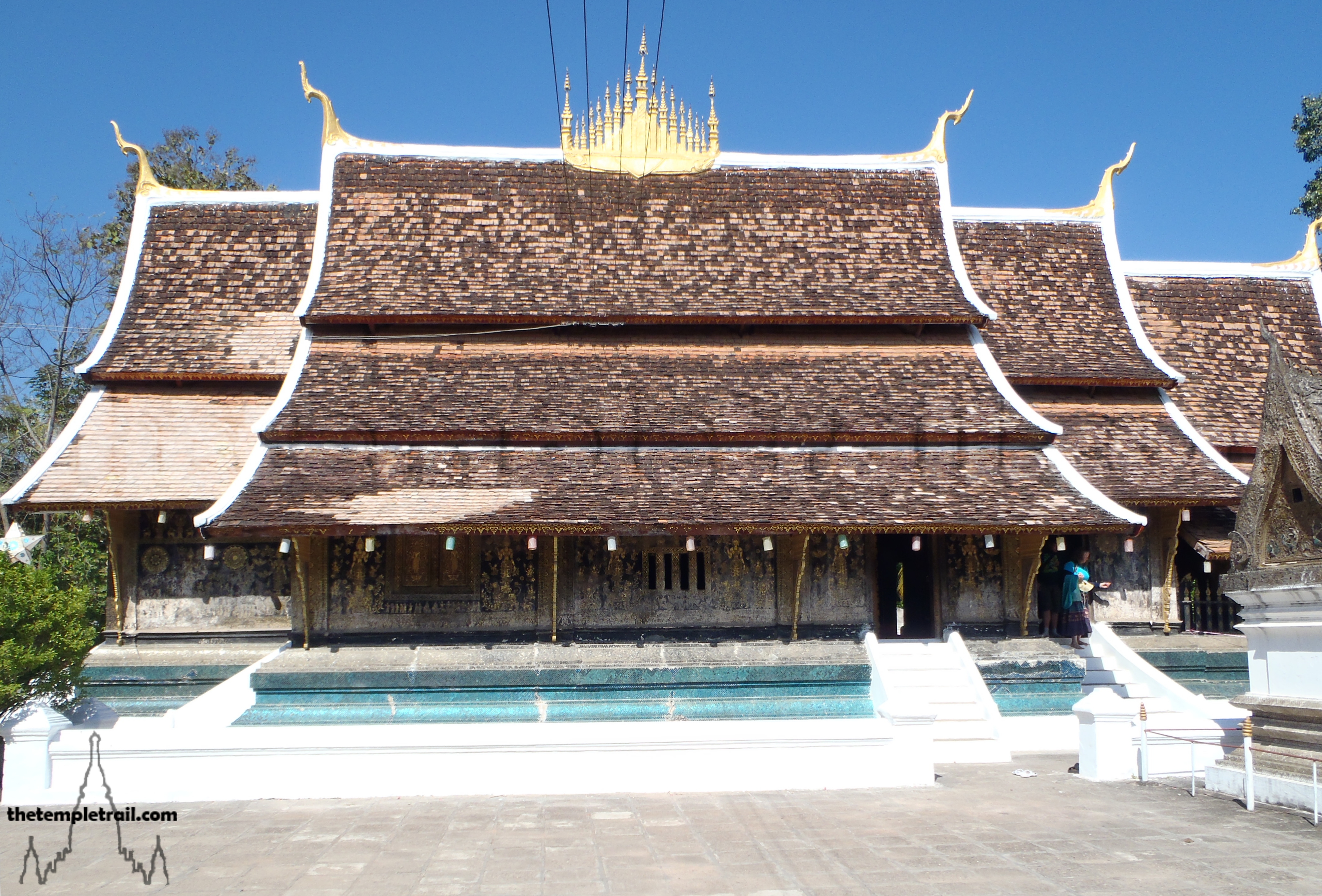
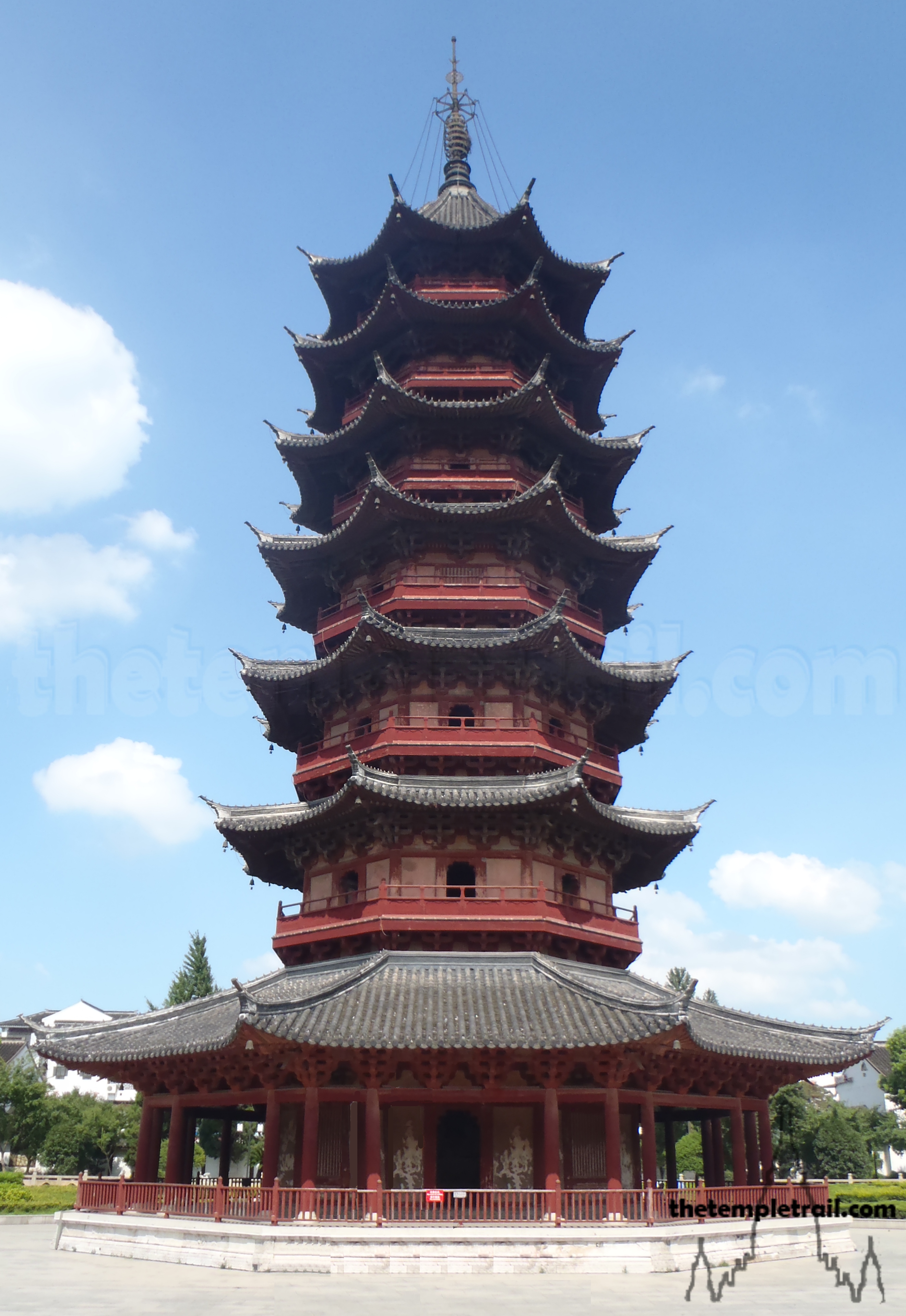 Chinese Buddhist Temples 101
Chinese Buddhist Temples 101